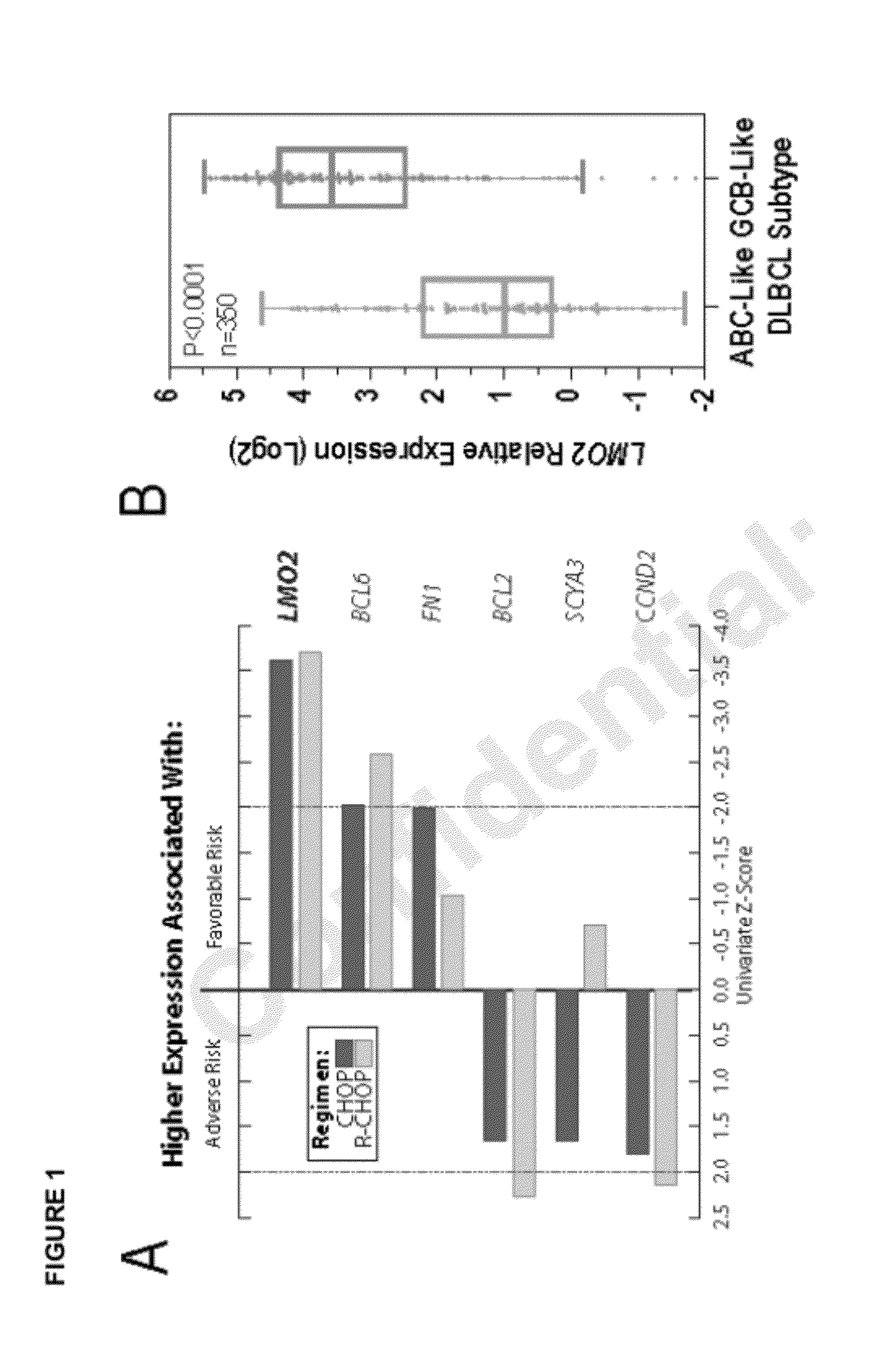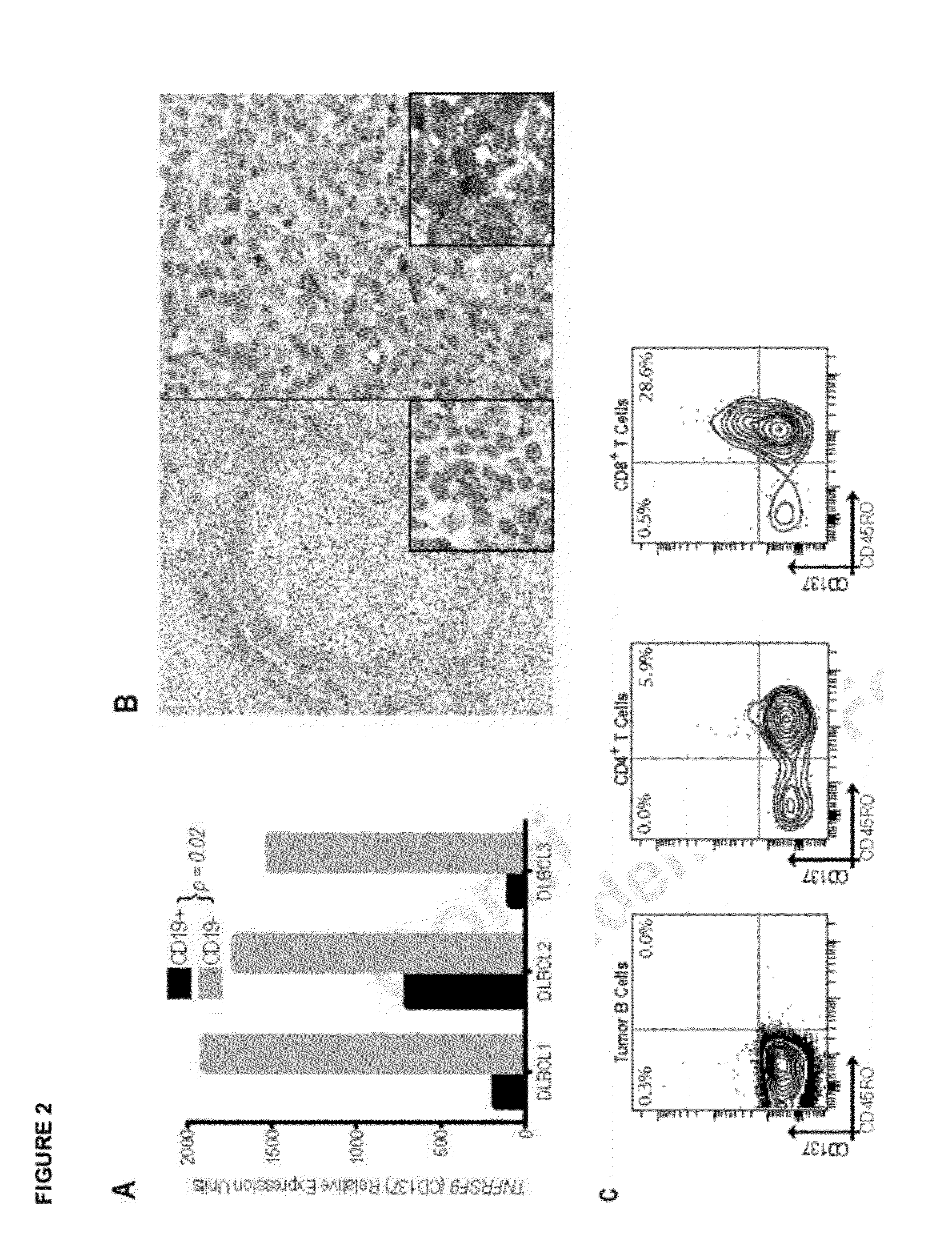Methods of Prognosis for Non-Hodgkin Lymphoma
a non-hodgkin lymphoma and prognosis technology, applied in the field of methods of prognosis for non-hodgkin lymphoma, can solve the problems of insufficient consensus approach to predict dlbcl prognosis and risk-adaptive management of this lymphoma, inability to achieve consensus approach, and need for fresh or frozen tissue. , to achieve the effect of increasing the level of lmo2, positive patient response and power
- Summary
- Abstract
- Description
- Claims
- Application Information
AI Technical Summary
Benefits of technology
Problems solved by technology
Method used
Image
Examples
example 1
Prediction of Survival in Diffuse Large B-Cell Lymphoma Based On the Expression of Two Genes Reflecting Tumor and Microenvironment
[0100]Several gene expression signatures predict survival in diffuse large B cell lymphoma (DLBCL), but the lack of practical methods for genome scale analysis has limited translation to clinical practice. We examined the power of individual genes to predict survival across different therapeutic eras. In studying 787 patients with DLBCL, we built and validated a simple model employing one gene expressed by tumor cells and another expressed by host immune cells, assessing added prognostic value to the clinical International Prognostic Index (IPI). We validated models in an independent cohort using diagnostic formalin-fixed specimens. We verified expression of LMO2 as an independent predictor of survival and ‘Germinal Center B-cell’ subtype. We identified expression of TNFRSF9 from the tumor microenvironment, as the best in bivariate combination with LMO2. ...
PUM
| Property | Measurement | Unit |
|---|---|---|
| Current | aaaaa | aaaaa |
| Current | aaaaa | aaaaa |
| Current | aaaaa | aaaaa |
Abstract
Description
Claims
Application Information
 Login to View More
Login to View More - R&D
- Intellectual Property
- Life Sciences
- Materials
- Tech Scout
- Unparalleled Data Quality
- Higher Quality Content
- 60% Fewer Hallucinations
Browse by: Latest US Patents, China's latest patents, Technical Efficacy Thesaurus, Application Domain, Technology Topic, Popular Technical Reports.
© 2025 PatSnap. All rights reserved.Legal|Privacy policy|Modern Slavery Act Transparency Statement|Sitemap|About US| Contact US: help@patsnap.com



